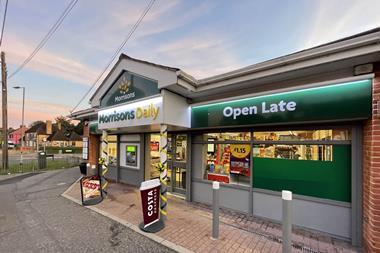Tesco’s new pricing strategy will grab some headlines, but it won’t change the game in grocery.
After a week of intense speculation, Tesco had no option to bring forward the announcement of its Big Price Drop which launches on Monday. No doubt it would much rather have kicked it off with a tactically placed story in the Sunday papers accompanied by a blitz of advertising, but it shows how social media has changed the game, with our good friend and twitter grocery guru Steve Dresser initially picking up that Tesco had made the unusual move of summoning all its managers in on Sunday, and then word getting around that something was afoot pretty fast.
It’s a significant move by Tesco, one which will no doubt intensify the noise around price, but it’s not the game-changer some might have been expecting. Tesco is absolutely right that living standards are falling and consumers are watching the pennies more, so reducing prices on 3,000 items in the core range will no doubt help cash-strapped shoppers. The big focus is on private label products and the aim no doubt is to persuade more shoppers away from brands by widening the price gap.
There is also an interesting shift in strategy. There is a move to simplify promotions, reducing BOGOFs because customers think they lead to waste - the much trumpeted “buy one get one later” plan of a year or two ago evidently didn’t work. In a market where somewhere over 40% of products are being sold on promotion, it’s a sensible move by Tesco to wean both itself and its customers off that addiction and move closer to EDLP.
Double Clubcard points really worked at the peak of the recession at locking in customers’ loyalty, but yesterday’s announcement of the return to single points suggest both double points has lost its effectiveness as a marketing lever and that Tesco’s need to acquire new shoppers is greater. By making that change, Tesco can fund the price cuts without eating too much into its profitability.
There’s clearly pressure on UK CEO Richard Brasher to inject some life into Tesco’s performance at home, and this will in turn put some pressure on Tesco’s rivals. For a start, Asda’s price guarantee means it has to be able to claim it is 10% cheaper so it will need to do something by way of a response. While Tesco can fund the price cuts through the savings resulting from axing double points, its rivals don’t have that option.
Fundamentally though, this move by Tesco won’t change the game. Price is obviously of vital importance to shoppers at a time when they are feeling less well off. But if it was the only factor, surely Asda and Tesco would be leading the pack in the market share analysis? Some people who are really feeling the squeeze are turning to the hard discounters, where the limited assortment means it’s impossible to spend a lot of money. But for most people, value is a function of price times quality and store experience and product quality are important factors too, areas where Tesco and Asda aren’t perceived as strong. That’s why the best performing grocers have been Waitrose and Morrisons, and Tesco’s Big Price Drop is unlikely to change that.


























No comments yet